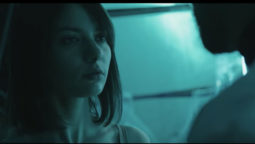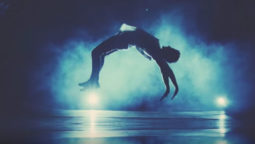The software development group, Propellerheads, have been putting out great software for years. Reason, their flagship product, was the first software I used to make music back in 2002. The main contributing factor for my purchase was that the software had everything you needed to start. Most DAW’s at the time did not come with virtual instruments, so you usually needed to use your own hardware, or purchase separate instruments to get started. With Reason, you had everything you needed to write a song with one piece of software. It is good to see that they have kept those same values through the years. Most of the virtual instruments that were created in early versions of the software still exist in the software today. Year after year, the developers have found ways to update their instruments to reflect the needs in modern music production. One benefit to owning their own instrument library is that they can now apply those instruments to programs other than Reason. Today, I will be reviewing the Propellerheads newest addition to their software family, Figure. Figure is a music creation app for iOS, which downloads for only 99 cents. Figure is based on some of the most popular instruments for Reason: The Thor synthesizer and the Kong drum machine. Using these two instruments, users can create songs on-the-go in a very effortless fashion.
From the very first second I used this app I felt that it was built around intuitive playability. The navigation from page to page is very natural and reading what each function does was easy because of the clear text delineating each section. At the top of the main page, you will find play and record buttons. Next to these buttons are the main instruments you will use to create music. The drum, bass & lead buttons will take you to each instrument, which I will be covering later. At the bottom of the main page, you will find two blue tabs controlling pattern and tweaks. These two tabs let you sequence and then effect your music. Once you press the pattern tab, you will see the sequencer for whatever instrument you have selected at the top of the page. Bars represent the sequencer, and the timing is controlled with the knobs above. In the knobs, you will see a numeric value; this value is the number of times each note will hit per measure. The bars are velocity sensitive, seeing that you get lesser values by lower on the bar.  There are three main instruments in figure: Drum, bass, and lead. Drum is a four-channel drum machine based on the Kong drum machine used in Reason. You have access to many kits, and can be scrolled through by swiping the title. I found that creating drumbeats with this was very easy, and there were enough sounds in the library to keep me interested. The bass and lead synth’s used for making sequenced basslines and lead rhythm tones. At first, I thought these synths were very basic, but after messing around with them for a bit, I was able to create some very complex bass patterns which had enough variation to make it sound live. The rhythm, range, and scale steps features all let you sculpt the synth to your liking.
There are three main instruments in figure: Drum, bass, and lead. Drum is a four-channel drum machine based on the Kong drum machine used in Reason. You have access to many kits, and can be scrolled through by swiping the title. I found that creating drumbeats with this was very easy, and there were enough sounds in the library to keep me interested. The bass and lead synth’s used for making sequenced basslines and lead rhythm tones. At first, I thought these synths were very basic, but after messing around with them for a bit, I was able to create some very complex bass patterns which had enough variation to make it sound live. The rhythm, range, and scale steps features all let you sculpt the synth to your liking.  The Song tab controls the main fundamentals of the project. This is where you will find functions such as tempo, key, and shuffle. I really liked the visual representation of the key and found the circle of fifths visualization helpful. The shuffle feature is nice for creating a swing feel. Keep in mind that this is a global shuffle and not just for the instrument you are controlling. Additionally, you can control the length of loops here.
The Song tab controls the main fundamentals of the project. This is where you will find functions such as tempo, key, and shuffle. I really liked the visual representation of the key and found the circle of fifths visualization helpful. The shuffle feature is nice for creating a swing feel. Keep in mind that this is a global shuffle and not just for the instrument you are controlling. Additionally, you can control the length of loops here.  The mix tab is used for controlling the volume levels of each instrument you have playing. I found this very helpful and easy to control. Each fader seemed to have wide enough spacing for my fat fingers. Additionally, the pump feature was a good addition. From what I gather, the pump feature provides a side-chain compression effect, which makes a “pumping” sound on the overall mix. It doesn’t allow you to control where you want the side-chain source to come from, but I am assuming it is defaulted the kick drum.
The mix tab is used for controlling the volume levels of each instrument you have playing. I found this very helpful and easy to control. Each fader seemed to have wide enough spacing for my fat fingers. Additionally, the pump feature was a good addition. From what I gather, the pump feature provides a side-chain compression effect, which makes a “pumping” sound on the overall mix. It doesn’t allow you to control where you want the side-chain source to come from, but I am assuming it is defaulted the kick drum.  Lastly, the system tab is used to manage some of the essential functions of figure. From this tab, you can save, export and share your songs. The Facebook and Twitter buttons make sharing your new creation with the world very easy. Additionally, the WIST feature lets you share between iOS devices very easily. WIST (Wireless Sync-Start Technology) is Korg’s innovative technology, which allows for wireless sync-start between two WIST-compatible apps on two iPads and/or iPhones located near each other. You can now sync with your friend’s device to create a dynamic live performance using two compatible apps. Overall, I liked the Figure app a lot. I don’t think there is a better music creation app on the market for a better value. Its functions and features empower the user to make quality music on the go. Additionally, the functionality is very intuitive, making the app attractive to everyone, even those with little to no experience making music.
Lastly, the system tab is used to manage some of the essential functions of figure. From this tab, you can save, export and share your songs. The Facebook and Twitter buttons make sharing your new creation with the world very easy. Additionally, the WIST feature lets you share between iOS devices very easily. WIST (Wireless Sync-Start Technology) is Korg’s innovative technology, which allows for wireless sync-start between two WIST-compatible apps on two iPads and/or iPhones located near each other. You can now sync with your friend’s device to create a dynamic live performance using two compatible apps. Overall, I liked the Figure app a lot. I don’t think there is a better music creation app on the market for a better value. Its functions and features empower the user to make quality music on the go. Additionally, the functionality is very intuitive, making the app attractive to everyone, even those with little to no experience making music.







Join the discussion
comments powered by Disqus